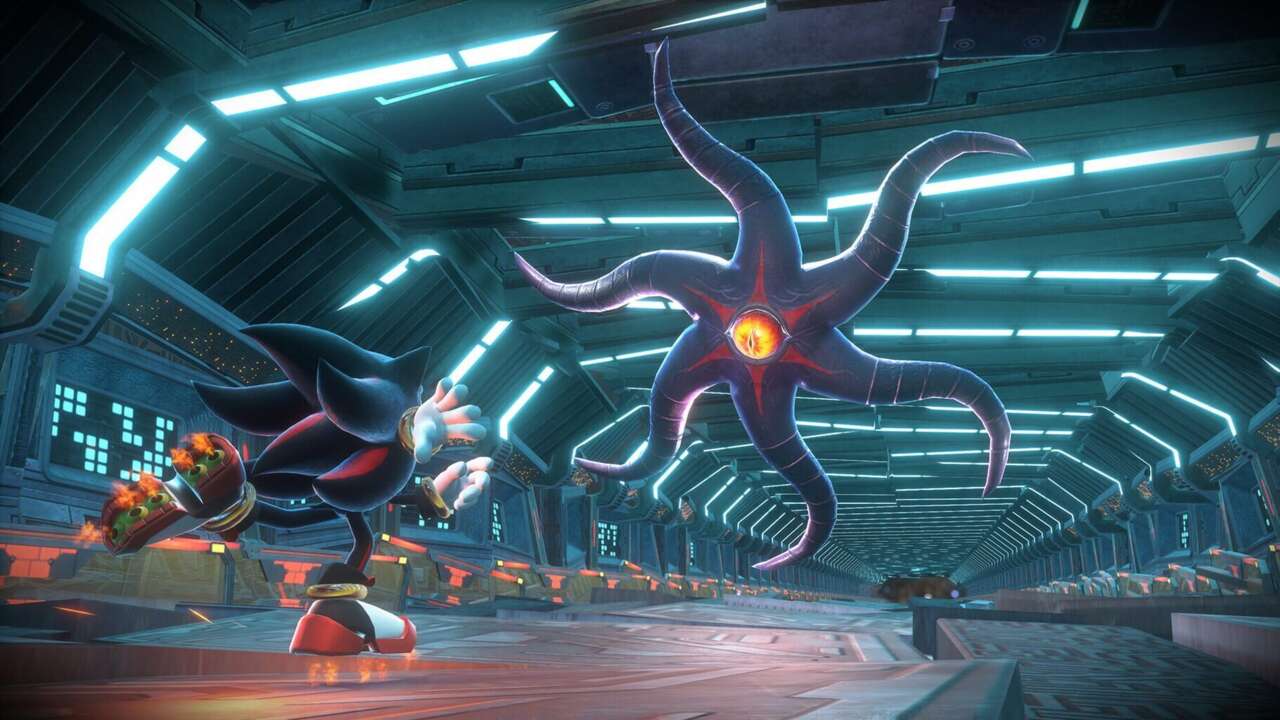Sonic X Shadow Generations is two games: a remaster of a game from 2011 and a brand-new game for 2024. And yet, both games feel oddly similar, building most of their levels on the backbone of Sonic games from the 2000s. In that respect, they carry forward some of the shortcomings of those Sonic games, like unnecessary extra mechanics and a bland story, but at the same time, they do well what those games excelled at: delivering fun platforming gauntlets accompanied by memorable music and an exhilarating sense of speed.
If you’ve already played Sonic Generations, you know what you’re getting with the first half of this package. Sonic’s adventure remains largely unchanged–most notably, the visuals are better, since this is a remaster–seeing the blue hedgehog team up with his past self to speed through a collection of levels inspired by his many previous adventures. Each level has two acts–the first sees past Sonic race through 2D levels while the second features modern-day Sonic running through the same space but now in 3D. Past Sonic handles much like he did in the original games back in the ’90s, while modern Sonic utilizes the mechanics added to the series during the 2000s, like the homing attack and dash. The whole collection is a celebration of Sonic’s career up to 2011.
In 2024, Sonic Generations feels outdated. While the old-school Sonic levels remain a timeless look back at the hedgehog’s origins, the second half no longer feels like an accurate presentation of modern-day Sonic, as the gameplay of the franchise has continued to transform over the past decade. This doesn’t outright ruin the original experience, though it does leave the conclusion of Sonic Generations feeling lacking, as if the trip through Sonic’s greatest hits abruptly stops partway through. It leaves the three-hour experience feeling rushed in a way it didn’t back in 2011.
The main draw of Sonic X Shadow Generations, however, is the Shadow Generations half of the game. This is the part of the game that’s brand-new, acting as an accompanying story to Sonic Generations. Shadow Generations follows Shadow the Hedgehog, concluding the arc of his story that started in 2001’s Sonic Adventure 2 and then continued in 2003’s Sonic Heroes, 2005’s Shadow the Hedgehog, and 2006’s Sonic the Hedgehog. The thread was largely dropped from the Sonic franchise and hasn’t been revisited in any significant way since.
Still suffering from amnesia and seeking answers as to his origins and purpose as the ultimate life form, Shadow is pulled into the same timeless space his friends were during the events of Sonic Generations, where threats from Shadow’s past still exist. Notably, Black Doom, the satanic alien warlord responsible for Shadow’s creation, returns after his death at the hands of Shadow during the events of Shadow the Hedgehog. A part of Black Doom lives on in Shadow and wants the hedgehog to relive significant moments of his life–in doing so, he’ll remember who he is and unlock Doom powers. Once Shadow fully embraces these abilities, he’ll truly be the ultimate life form and Black Doom will take over his body, allowing him to live again. Shadow plays along, unlocking new Doom powers in hopes of becoming strong enough to destroy Black Doom for good.
It’s a fine enough conclusion for a storyline that many Sonic fans might have forgotten about (or perhaps weren’t even alive for, given the last chapter of this tale occurred in a game from 2006) but Sonic games have rarely been remembered for their stories. If anything, much like Sonic Generations did for Sonic, Shadow Generations’ story is a great opportunity to revisit some of Shadow’s most memorable moments as well as past boss battles against other artificial beings that could be considered rivals to the title of “ultimate life form,” like the Biolizard from Sonic Adventure 2. I was grinning like a kid again when Shadow faced off against Metal Overlord and Crush 40’s “What I’m Made Of…” started playing, reminding me of the hours I lost to Sonic Heroes when I was 10 years old.
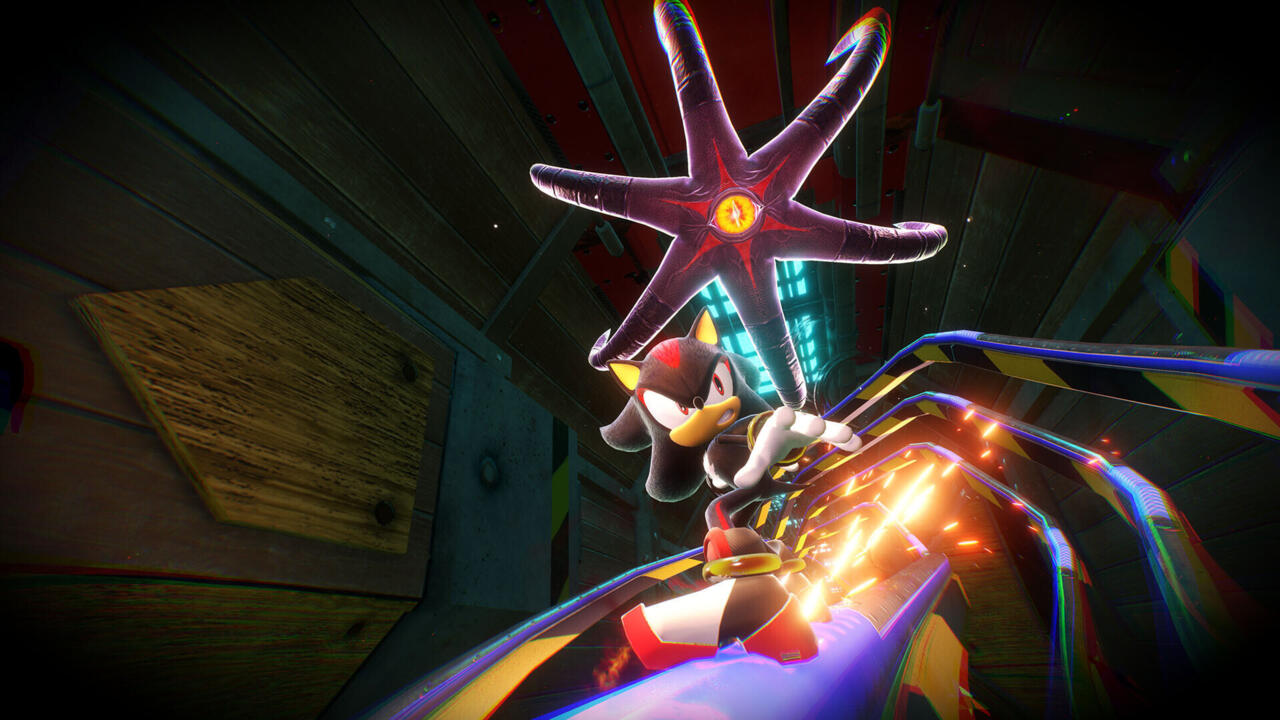
If you look beyond the layer of nostalgia, your mileage when it comes to Shadow Generations will vary. If Sonic games from the 2000s were some of your favorite games, you’ll enjoy Shadow Generations. But if your taste in platformers skews towards more modern sensibilities, Shadow Generations doesn’t offer anything new or noteworthy that you wouldn’t have already seen done better in other games.
The game builds on established Sonic mechanics by giving Shadow a Chaos Emerald from the jump, allowing him to use Chaos Control and freeze time for a few brief seconds, slowing approaching enemies before they surround Shadow or stopping moving platforms long enough for him to jump between them. He can also use Chaos Spear to stun otherwise invincible enemies or hit far-off switches. In both cases, these abilities add to the experience of playing a Sonic game, creating room for more types of rudimentary puzzles that don’t affect the flow of racing through a stage. They both help maintain a sense of speed from start to finish while also adding a bit of tension to the largely linear levels by testing you on your timing.
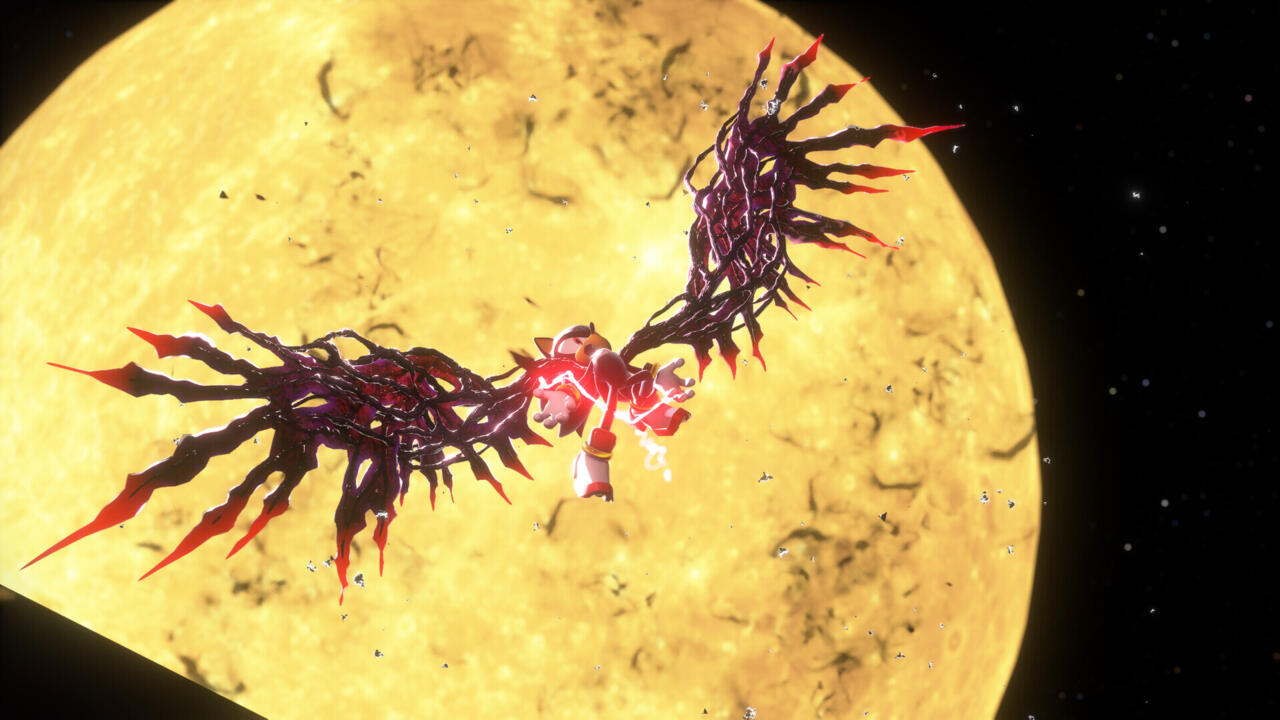
Alongside Chaos Control and Chaos Spear, Shadow will unlock new Doom powers over time that aid how he can get around. Perhaps the most interesting of the lot is a skill that lets Shadow knock a specific enemy type far into the distance and then teleport to the hapless victim to hit them again, acting more as a means of traversal than combat. In a few cases, Shadow has options as to where he can knock an enemy, allowing you to have some agency in where you go next to complete a level. This very rarely occurs, but whenever it pops up, it makes me want to replay the mission again if only to see if one of the other choices would have allowed me to complete the stage faster.
Most of Shadow’s new abilities aren’t as much fun to play with, however. Shadow eventually unlocks a skill that lets him transform into a gooey slug-like creature to swim through muck and Spider-Man swing from globules of slime–it’s weird and awkward and ruins the sense of speed every time, and it frequently pops up as a mandatory part of progressing in a stage. Worse is an endgame Doom ability that’s especially clunky and difficult to use, forcing you to control Shadow at speeds that are a tad too fast and can see you regularly careen over a stage’s guard rails and into the abyss, forcing a restart at the last checkpoint. I had many frustrating deaths near the end of the game because of this particular Doom ability, and ultimately only got past the final levels by forcing myself not to use it and awkwardly jump through obstacles in a way the game clearly did not intend me to. In a game built around platforming that revolves around going fast, it’s understandable that an ability designed for you to go even faster could be appealing, but when it comes at the cost of going so fast that you then have to course correct and slow things down even more than usual, it feels like said mechanic would have been better off avoided altogether.
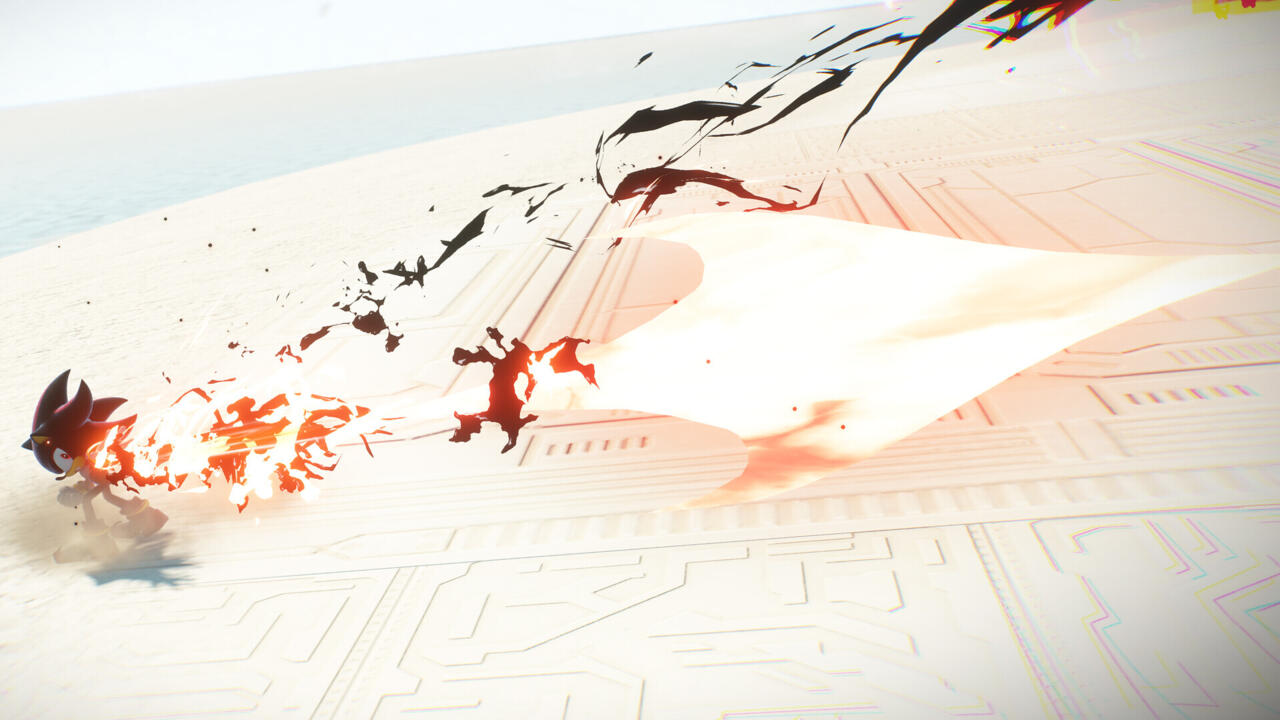
These Doom abilities also feel strangely juxtaposed against the vibe that Shadow Generations is a trip down memory lane for Shadow, as they’re skills that Shadow has never had before. In comparison, Sonic Generations features mechanics inspired by Sonic’s adventures, like the colorful aliens that gift Sonic’s unique abilities from Sonic Colors. Admittedly, if Shadow Generations did the same thing, it would be yet another Sonic video game with the protagonist sundering fools with pistols and assault rifles since one of Shadow’s most noteworthy traits is that he’s not afraid to shoot people, and I could see the Sonic Team not wanting to go down that path again. But it still feels so out of place to see Shadow utilize abilities we haven’t seen him use before when the game is a celebration of Shadow’s journey that reminisces on his previous adventures.
These new abilities have uses within the hub that Shadow returns to between each stage. Here, the abilities feel better, transforming the 3D space into a playground where Shadow’s accumulation of Doom traits allows him to explore more and more of the space. With each new ability, you can traverse further, finding collectibles and–more importantly–small challenge levels that you need to complete to earn the keys that unlock the doors to the boss rooms.
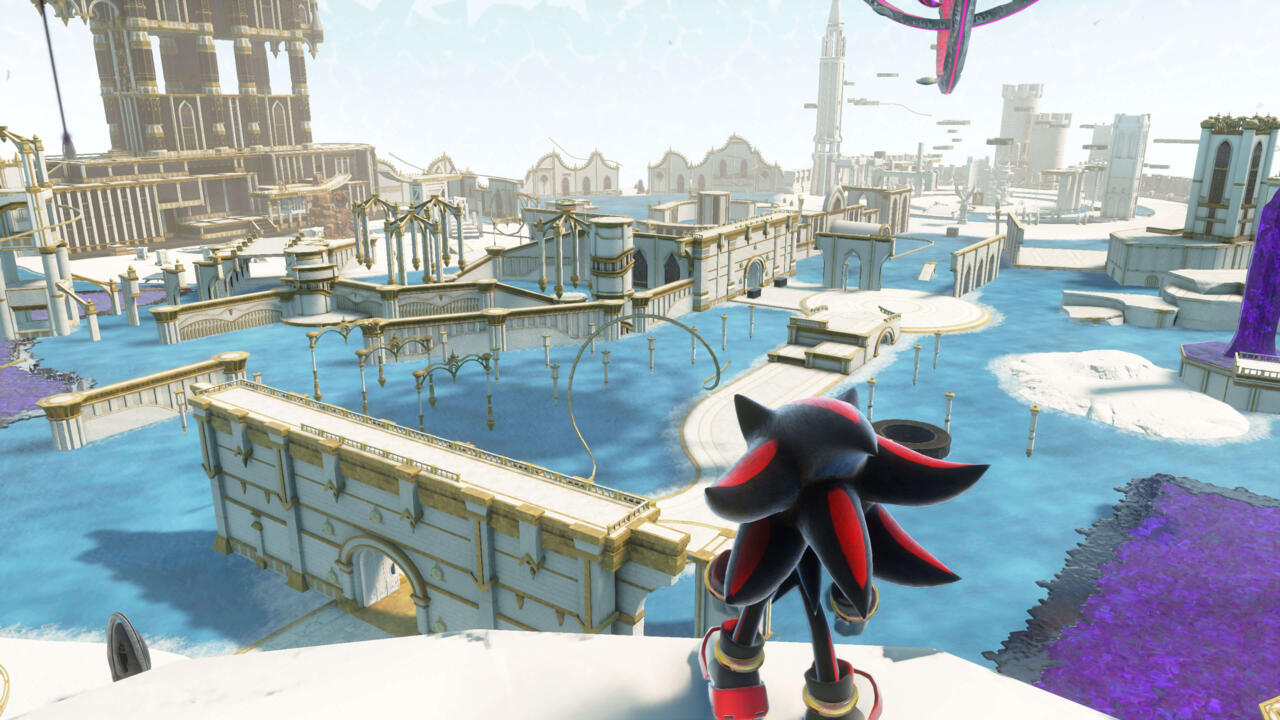
The challenge levels feature an assortment of tasks that require you to make your way through a part of the main stages with a specific restriction or task. A challenge level might require you to beat a level with only one ring, meaning you can only afford one mistake, for example, while another might see you have to reach the goal within a time limit while also defeating a certain number of a specific enemy. They help alleviate what I otherwise would imagine to be a repetitive game, adding interesting skill challenges that shake up the established formula between the main levels.
Aesthetically, Shadow Generations doesn’t have any bad levels, pulling from Shadow’s adventures through fantastical locales and sci-fi factories. They’re all a visual delight, especially at full speed where their bright colors and careful signposting intuitively guide you forward toward the goal, all in pursuit of getting the fastest time possible. The music is also excellent. Most of Shadow’s past adventures featured rock music perfectly suited for the most angsty of teens and, graciously, you can change the music for any one stage to some of these past songs, like “All Hail Shadow” or “I Am…All Of Me.”
Sonic X Shadow Generations is a weird package. On one hand, Sonic Generations is a remaster of a great game from 2011 that now feels like it’s a little outdated. And on the other, Shadow Generations is the conclusion to a storyline that the franchise hasn’t really cared about since 2006. As someone who specifically got into Sonic games during that early 2000 period, this collection feels like it speaks directly to me. But it also feels much like its protagonists–lost in a place out of time and desperate to return to fonder times. It’s a nice enough trip down memory lane, but the trip features all the speed bumps you’d expect from games from that era.
